Table of Contents
ToggleIslamic-era wall art is a captivating form of artistic expression that reflects the deep spirituality and cultural richness of the Islamic world. From the intricately adorned walls of mosques to the elegant calligraphy in homes and public spaces, Islamic-era wall art carries a profound significance in both religious and secular contexts. In this article, we explore the history, styles, and symbolism behind Islamic-era wall art, celebrating its enduring appeal and impact on global art and aesthetics.
This captivating art form continues to inspire and influence the global artistic landscape, transcending cultural and religious boundaries. Islamic-era wall art serves as a reminder of the universality of human creativity and the power of art to foster spiritual connection, aesthetic delight, and cultural unity. As we celebrate the legacy of Islamic-era wall art, we embrace the enduring beauty and timeless appeal of this cherished artistic tradition.
Islamic wall Decor
Islamic-era wall decor encompasses a wide range of artistic expressions inspired by Islamic culture and religious traditions. It includes various forms of art and decorative items designed to adorn the walls of homes, mosques, and Islamic institutions. Islamic-era wall decor serves not only as a means of beautification but also as a way to express one’s faith and devotion to Islam.

A Spiritual Connection in Islamic Calligraphy
Islamic-era calligraphy, the art of beautifully writing verses from the Quran and other religious texts, lies at the heart of Islamic-era wall art. Calligraphy has played a pivotal role in Islamic countries’ culture, with its origins dating back to the time of the Prophet Muhammad.
Persian and Arabic calligraphy, with its elegant curves and intricate strokes, is regarded as a divine art form, reflecting the belief that the written word is a sacred gift from God. Islamic-era calligraphy adorns the walls of mosques, homes, and public spaces, serving as a reminder of the spiritual connection between humanity and the divine.

Geometric Patterns in Islamic Wall Art
Geometric patterns are another hallmark of Islamic wall art, captivating viewers with their mesmerizing complexity. Islamic geometric patterns emerged as a way to avoid depicting living beings in religious settings, adhering to the principle of aniconism. Instead, artists and architects explored the mathematical precision and beauty of geometric shapes, creating stunning designs that adorn mosques and palaces.
The repetition of geometric patterns symbolizes the infinite nature of God’s creation, inviting viewers to contemplate harmony and order in the universe.

The Splendor of Tilework in Islamic Wall Art
Tilework, known as “Kashi Kari” in Persian and “Zellij” in Arabic, is a cherished form of Islamic-era wall art that adorns many iconic structures. Intricate tiles are carefully assembled to create captivating mosaics, often depicting gereh (girih) geometric patterns, floral motifs, and calligraphic inscriptions.
Tilework has been used to embellish the interiors and exteriors of mosques, madrasas, and palaces, showcasing the meticulous craftsmanship of Islamic-era artisans. These vibrant and colorful compositions add a sense of splendor and beauty to architectural spaces, inviting contemplation and spiritual reflection.
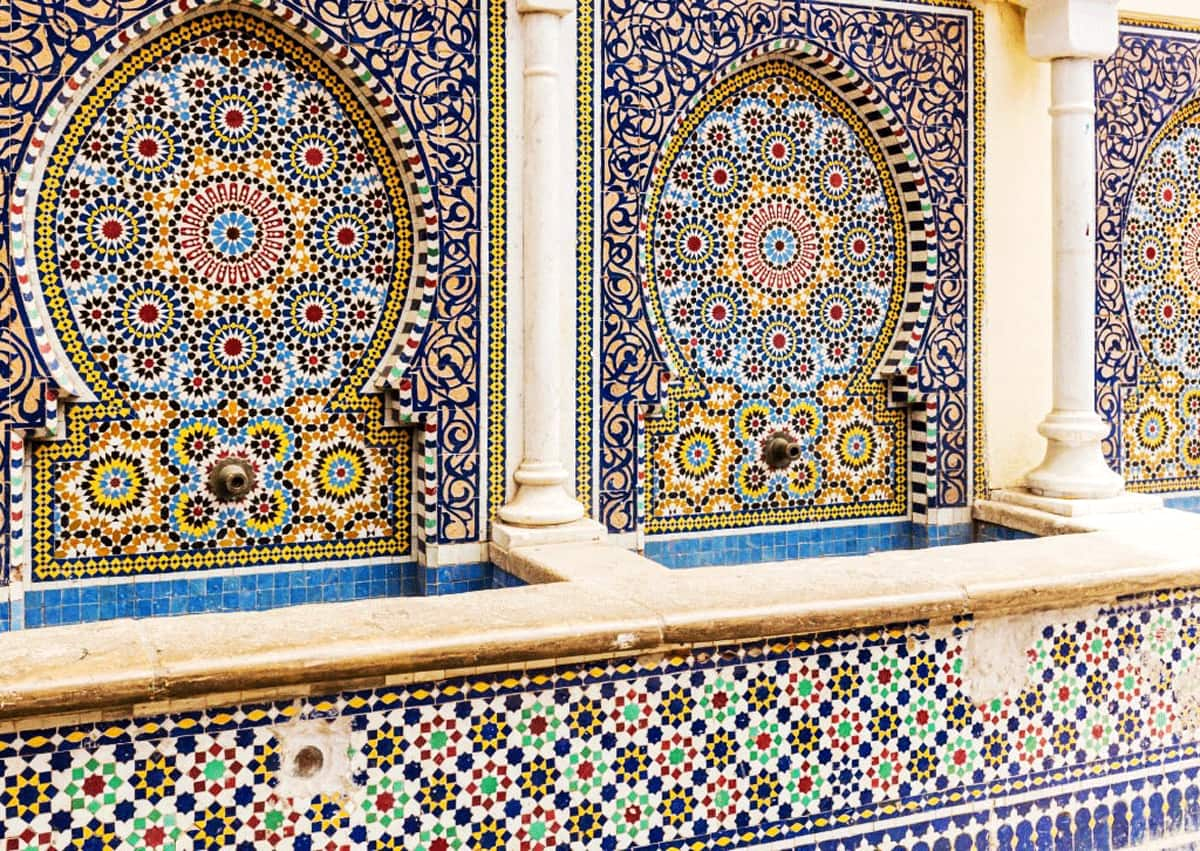
Read more: Types of Islamic geometric patterns
Stories and Symbols in Miniature Paintings
Islamic miniature painting is a captivating form of wall art that illustrates narratives from Islamic history, Persian epics, and religious texts. These exquisite paintings, often accompanied by poetic verses, are meticulously detailed and richly colored.
Miniature paintings were used to adorn manuscripts, albums, and walls in palaces and noble residences. The delicate brushwork and attention to detail in miniature art reflect the deep reverence for storytelling and the beauty of human expression.

Spiritual and Cultural Unification in Islamic Wall Art
Islamic-era wall art serves as a unifying force, connecting diverse Islamic cultures through shared artistic traditions. From the grand mosques of Andalusia to the palaces of the Persian Empire, Islamic-era wall art reflects the unity of faith and culture that spans continents and centuries.
Islamic-era wall art fosters a sense of community and spiritual connection among believers, regardless of their cultural backgrounds. It also serves as an invitation to visitors to engage with Islamic-era culture and aesthetics, promoting cross-cultural understanding and appreciation.
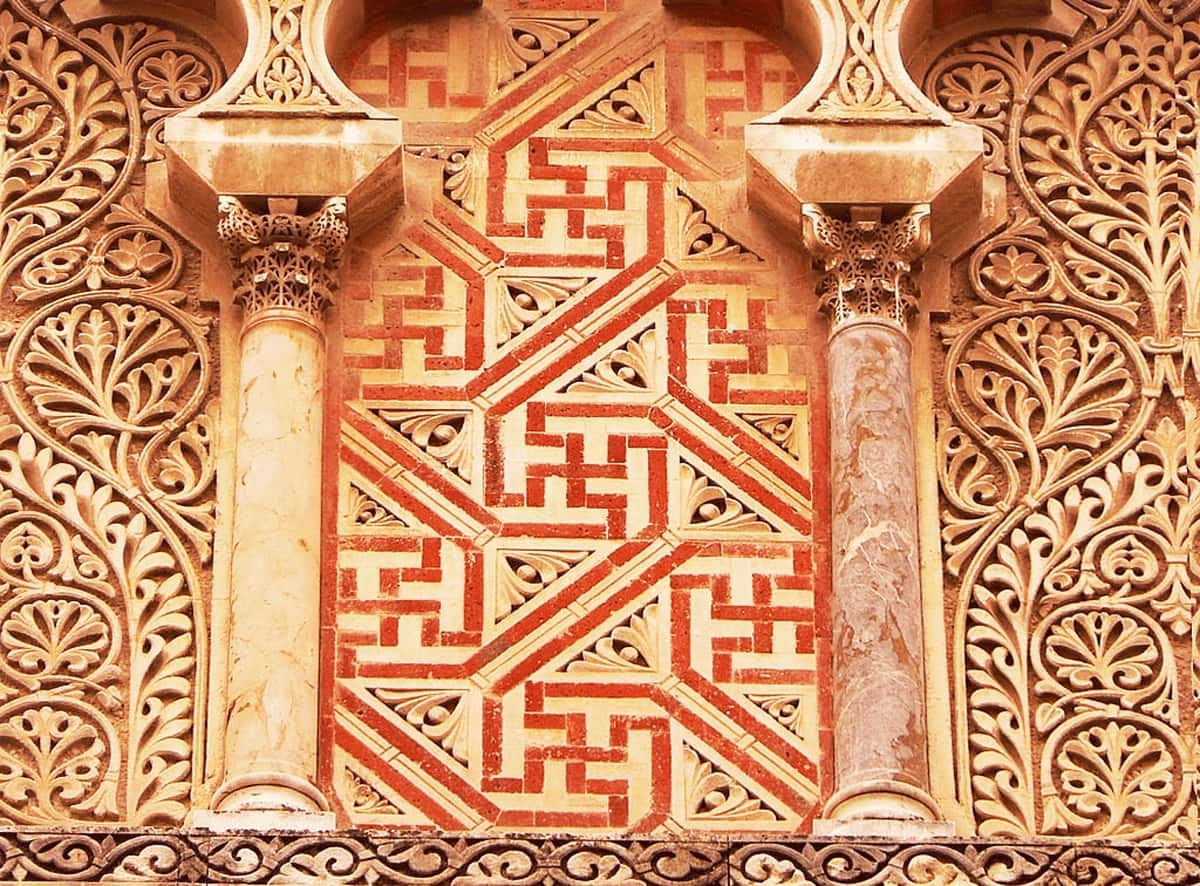
Historical Evolution of Islamic Wall Art
The roots of Islamic-era wall art can be traced back to the early days of Islam when the need to embellish mosques and religious spaces emerged. As Islam expanded, so did the artistic expressions of the faith. In the early Islamic period, artists drew inspiration from diverse cultural traditions, resulting in a fusion of styles known as “Islamicate”.
During the Umayyad and Abbasid caliphates, Islamic-era wall art began to flourish, with artists incorporating elements from Persian, Byzantine, and Central Asian cultures. The Great Mosque of Damascus and the Great Mosque of Samarra bear witness to the grandeur and diversity of early Islamic architectural and artistic achievements.
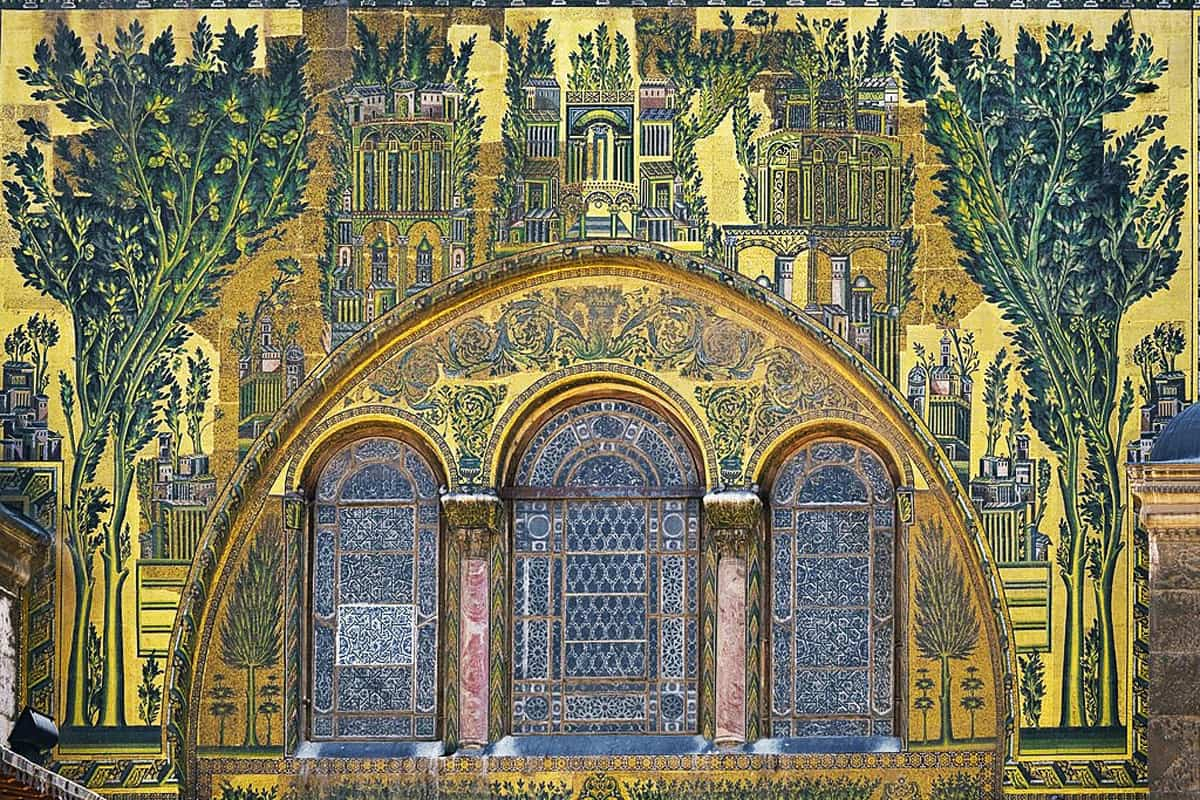
The Golden Age of Islamic Art
The period from the 9th to the 13th centuries is often referred to as the “Golden Age” of Islamic-era art. This era saw remarkable advancements in various artistic disciplines, including calligraphy, tilework, and miniature painting.
In the Islamic world, art and scholarship flourished side by side. The pursuit of knowledge was intricately linked with artistic endeavors, and calligraphers, scholars, and poets collaborated to produce awe-inspiring manuscripts and art pieces. This intellectualism enriched Islamic-era wall art, infusing it with deep philosophical meaning and spiritual significance.
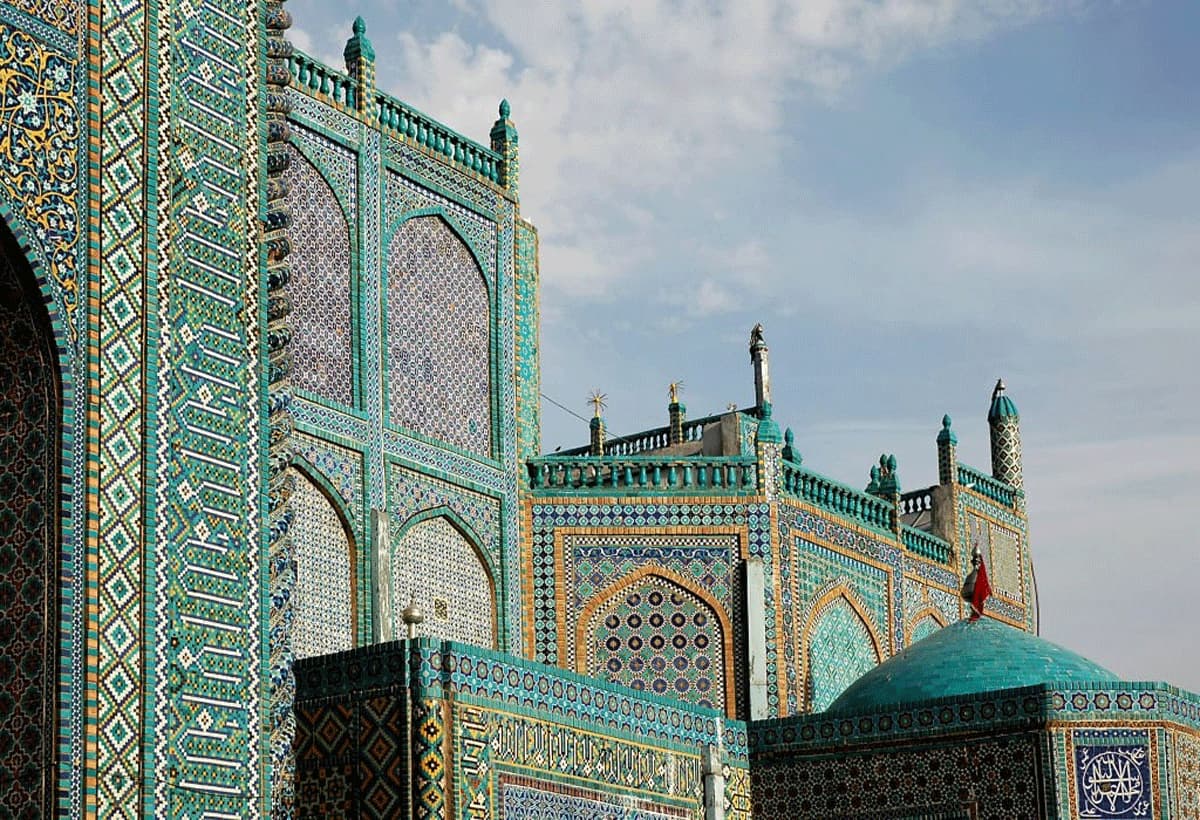
Diverse Regional Expressions
As Islamic territories expanded to encompass regions as diverse as Spain, India, and Persia, unique regional expressions of Islamic-era wall art emerged. In Andalusia, Spain, the Alhambra Palace showcases stunning geometric patterns and intricate stucco work, reflecting the fusion of Islamic and Moorish art.
In Persia, Islamic-era wall art took on a poetic and mystical dimension, with miniature paintings illustrating the rich cultural heritage of the region and the profound teachings of Sufi mystics.
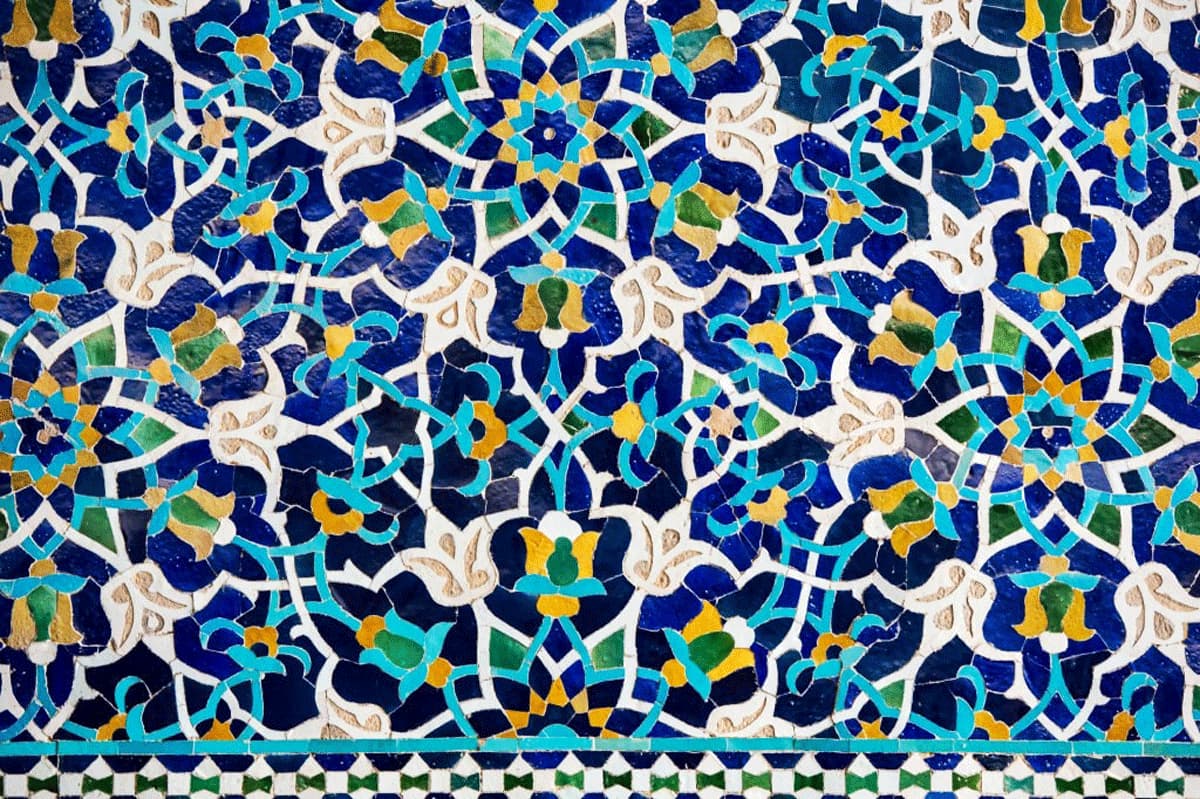
Revival and Renaissance
The art of Islamic-era wall art experienced a revival during the Safavid, Ottoman, and Mughal empires. These empires patronized the arts and promoted the development of architectural masterpieces adorned with magnificent wall art.
The exquisite tilework of the Blue Mosque in Istanbul, the awe-inspiring calligraphy of the Sheikh Lotfollah Mosque in Isfahan, and the poetic storytelling of the miniature paintings in the Mughal courts of India all exemplify the artistic renaissance during these periods.

Contemporary Resurgence
In the contemporary era, Islamic wall art has experienced a resurgence, as artists and artisans seek to preserve and revitalize traditional techniques. Contemporary calligraphers, for example, explore new media and styles while staying true to the classical forms of Islamic calligraphy.
In architecture, modern mosques and cultural centers integrate traditional elements of Islamic wall art with innovative designs, celebrating the continuity of Islamic artistic expression.
Symbolism and Spiritual Meaning in Islamic Wall Art
Islamic-era wall art goes beyond its visual beauty; it is imbued with profound symbolism and spiritual meaning. The choice of motifs, colors, and compositions often conveys deeper messages, inviting viewers to reflect on spiritual truths and virtues.
In Islamic-era calligraphy, the use of specific verses from the Quran or the sayings of the Prophet Muhammad carries spiritual significance. Words like “Bismillah” (In the name of Allah) and “SubhanAllah” (Glory be to Allah) are common in Islamic wall art, reminding viewers of God’s omnipresence and divine grace.
Geometric patterns, with their infinite repetition and harmony, symbolize the unity and perfection of God’s creation. The intricate interlocking shapes represent the cosmic order and the divine structure of the universe, inviting contemplation and meditation on the beauty of God’s design.
Art as a Source of Inspiration in Islamic Wall Art
Islamic-era wall art serves as an endless source of inspiration for artists, designers, and architects worldwide. The harmonious integration of form and function in Islamic architectural design continues to influence modern structures.
Contemporary artists draw inspiration from Islamic calligraphy and geometric patterns, incorporating these elements into various art forms, including digital art, graphic design, and interior decor. This fusion of tradition and innovation bridges the gap between the past and present, ensuring that Islamic-era wall art remains relevant and cherished in the modern world.
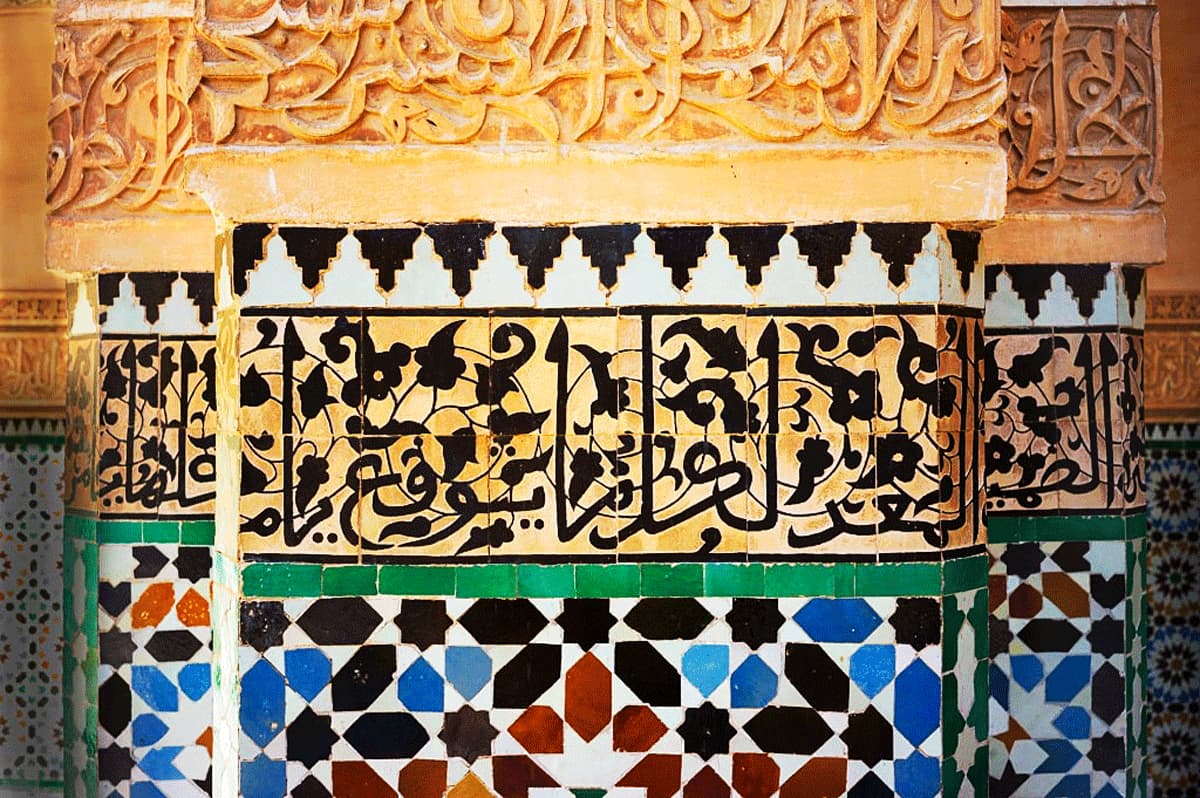
Read more: Online Islamic art course
The Role of Islamic Wall Art in Community Spaces
Islamic-era wall art has a significant presence in community spaces, fostering a sense of identity and belonging. In mosques, it serves not only as a decorative element but also as a reminder of the mosque’s sacred purpose and the unity of the congregation in worship.
Public spaces, such as bazaars and caravanserais, were adorned with Islamic-era wall art to create a welcoming and inspiring environment for travelers and traders. This artistic expression not only beautified the spaces but also reflected the cultural richness and hospitality of the Islamic world.
Preservation and Challenges in Islamic Wall Art
Preserving Islamic-era wall art poses certain challenges due to the passage of time and external factors. Some historical monuments and art pieces have suffered damage from natural disasters, wars, and neglect.
Preservation efforts by governments, organizations, and communities are essential to protect this invaluable cultural heritage. Technological advancements, such as digital documentation and virtual reconstructions, aid in preserving Islamic-era wall art for future generations.
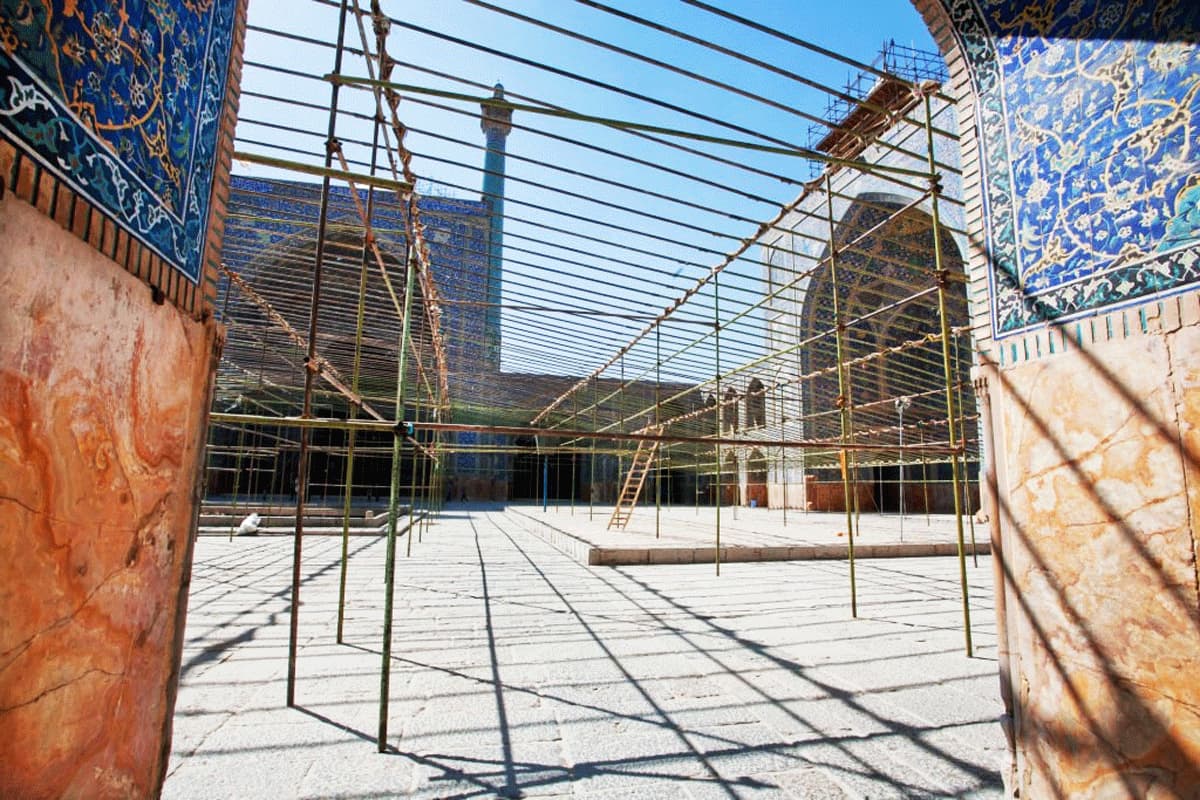
Global Appreciation and Understanding
The beauty and cultural significance of Islamic-era wall art has transcended cultural and religious boundaries, captivating audiences from diverse backgrounds. Exhibitions and cultural exchanges provide a platform for people worldwide to engage with Islamic-era art and gain a deeper understanding of its spiritual and artistic value.
Islamic-era wall art serves as a bridge between cultures, encouraging mutual respect and appreciation for diverse artistic expressions. It fosters an environment where individuals can explore and celebrate the richness of cultural heritage beyond their own.
Cultural Diversity in Islamic Wall Art
One of the most captivating aspects of Islamic-era wall art is its remarkable diversity, reflecting the vast array of cultures and civilizations encompassed by the Islamic world. From the intricate tilework of Persia to the majestic stucco decorations of Andalusia, each region has contributed its unique artistic expressions to the rich tapestry of Islamic-era wall art.
In Central Asia, vibrant Persian tiles in Uzbekistan adorned with floral motifs and calligraphy grace the walls of historic madrasas and mosques. In Turkey, the exquisite Iznik ceramics showcase a beautiful fusion of Ottoman and Persian influences, creating a style all their own.
North Africa boasts distinctive Islamic-era wall art, featuring geometric zellij patterns in Morocco and Tunisia. These mosaics, often in shades of blue and green, evoke a sense of serenity and spiritual contemplation.
The diverse styles and techniques of Islamic-era wall art underscore the cultural exchange and creative intermingling that have shaped the Islamic artistic legacy throughout history. This cultural diversity serves as a testament to the inclusive and pluralistic nature of Islamic civilization, embracing various influences while maintaining its unique identity.
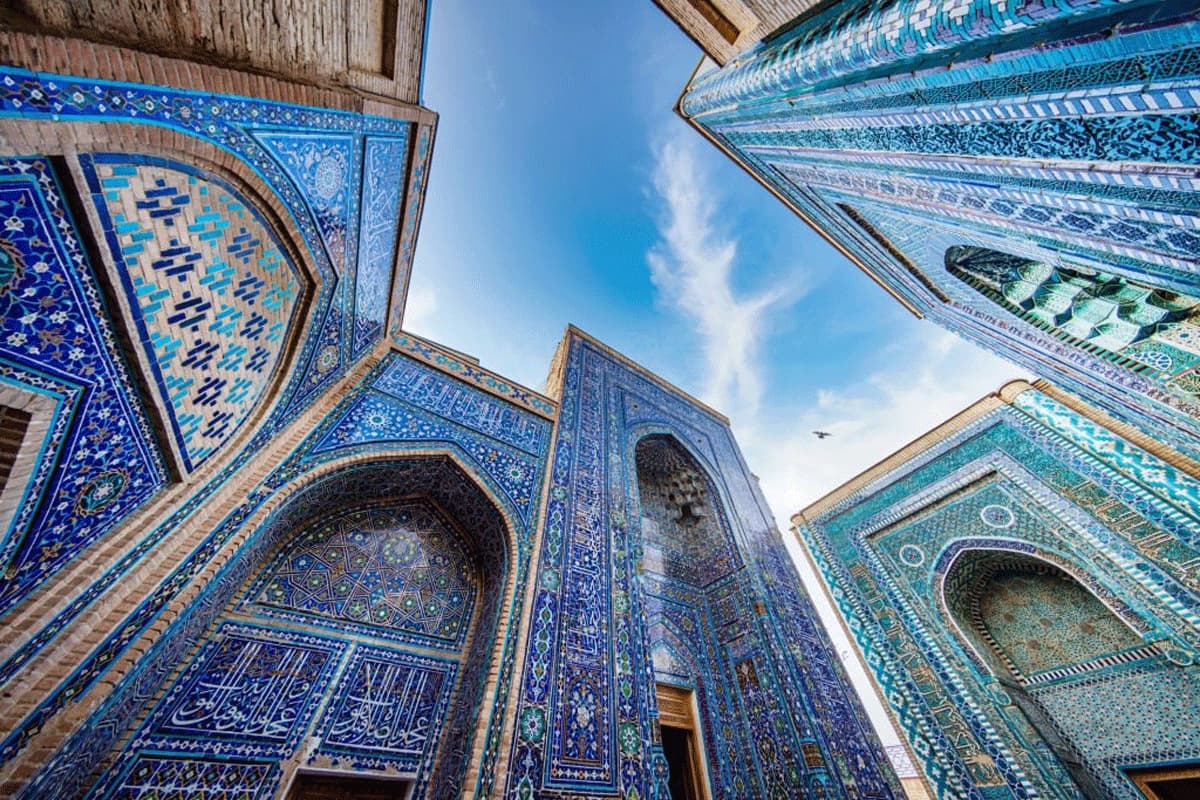
Islamic Wall Art and Interfaith Dialogue
Islamic-era wall art holds the potential to foster interfaith dialogue and understanding between different religious communities. Its abstract nature and avoidance of human and animal representation align with the principles of aniconism found in several religious traditions.
In settings where people of different faiths gather, such as cultural centers or public spaces, Islamic-era wall art can create an atmosphere of respect and inclusivity. The universal beauty of Islamic calligraphy and geometric patterns can transcend religious boundaries, inspiring admiration and appreciation from individuals of diverse backgrounds.
Through the lens of Islamic-era wall art, interfaith dialogues can explore shared values of spirituality, beauty, and artistic expression, promoting mutual understanding and respect among religious communities.
Contemporary Innovations in Islamic Wall Art
In the contemporary era, artists and designers are reimagining Islamic-era wall art through innovative approaches and modern techniques. Digital art installations incorporate illuminated calligraphy and projections, creating mesmerizing displays that blend tradition with technology.
Contemporary Islamic-era interior design embraces elements of traditional wall art in modern settings, infusing spaces with spiritual and cultural significance. Artists experiment with various materials, including glass, metal, and wood, to craft unique interpretations of Islamic-era calligraphy and geometric patterns.
Moreover, Islamic-era wall art has found a prominent place in digital media, where artists share their creations with global audiences through social media platforms and virtual galleries. This digital outreach enables Islamic-era art to transcend physical boundaries and reach individuals worldwide, sparking interest and appreciation for its timeless beauty.
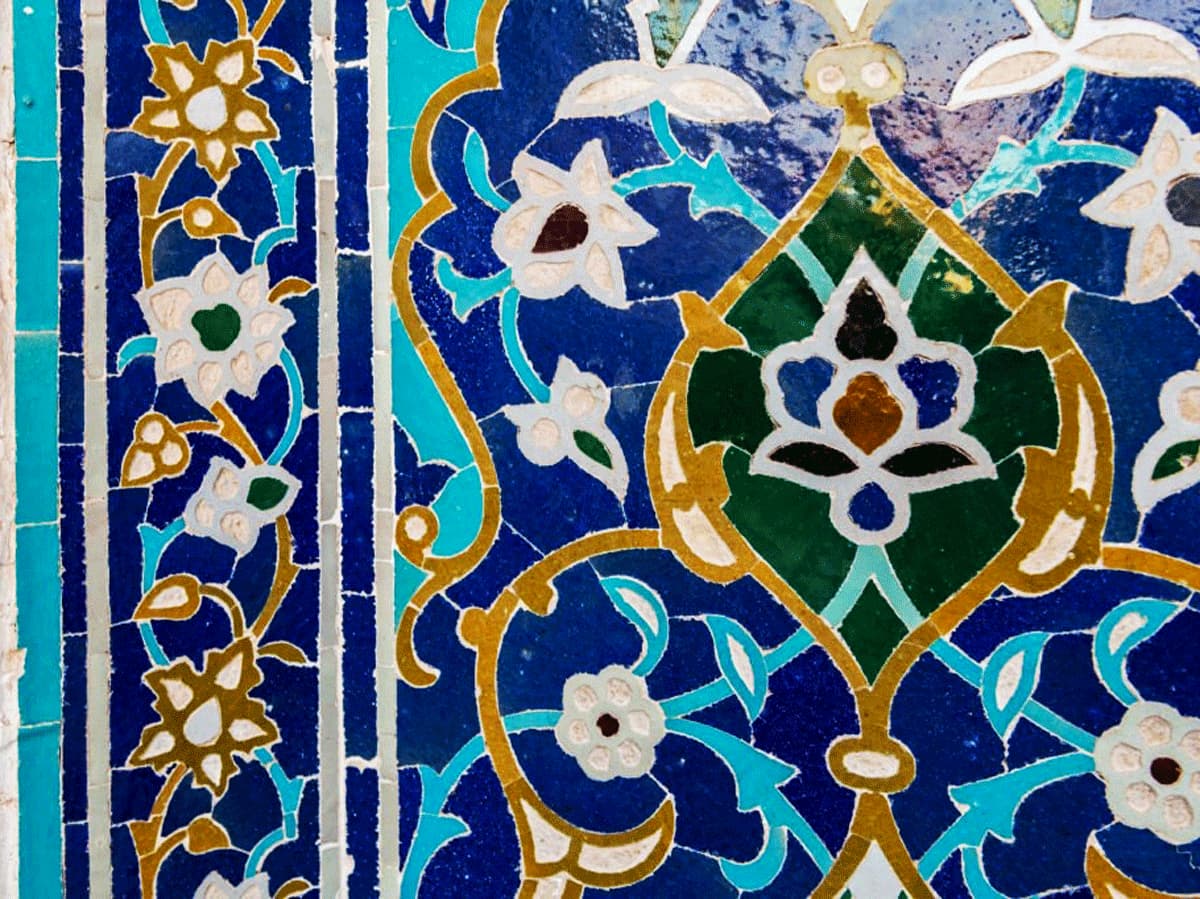
FAQ about Islamic Wall Art
What is the significance of Islamic wall art in Islamic culture and religion?
Islamic-era wall art holds spiritual and artistic importance, reflecting devotion to Allah and Islamic teachings. Geometric patterns symbolize unity and Allah as the Creator. Persian and Arabic calligraphy transcribes Quranic verses, creating a connection to the spiritual world.
How can one incorporate Islamic wall art into their home or living space?
Add Persian and Arabic calligraphy decals or canvas art with Quranic verses. Hang Islamic wall tapestries or wooden carvings for a captivating effect. Frame art prints featuring calligraphy or traditional motifs in a gallery wall format. Choose designs that resonate with your style and spiritual preferences.
Conclusion
Islamic-era wall art is a treasure trove of cultural diversity, spiritual symbolism, and artistic innovation. From its historical roots in early Islamic civilizations to its contemporary relevance in the digital age, Islamic-era wall art continues to inspire and resonate with people worldwide.
As we celebrate the enduring legacy of Islamic-era wall art, we embrace its ability to unite cultures, foster interfaith dialogue, and inspire creativity across generations. Islamic-era wall art stands as a testament to the power of art to transcend boundaries, celebrate cultural diversity, and connect humanity through shared beauty, spirituality, and creativity.
